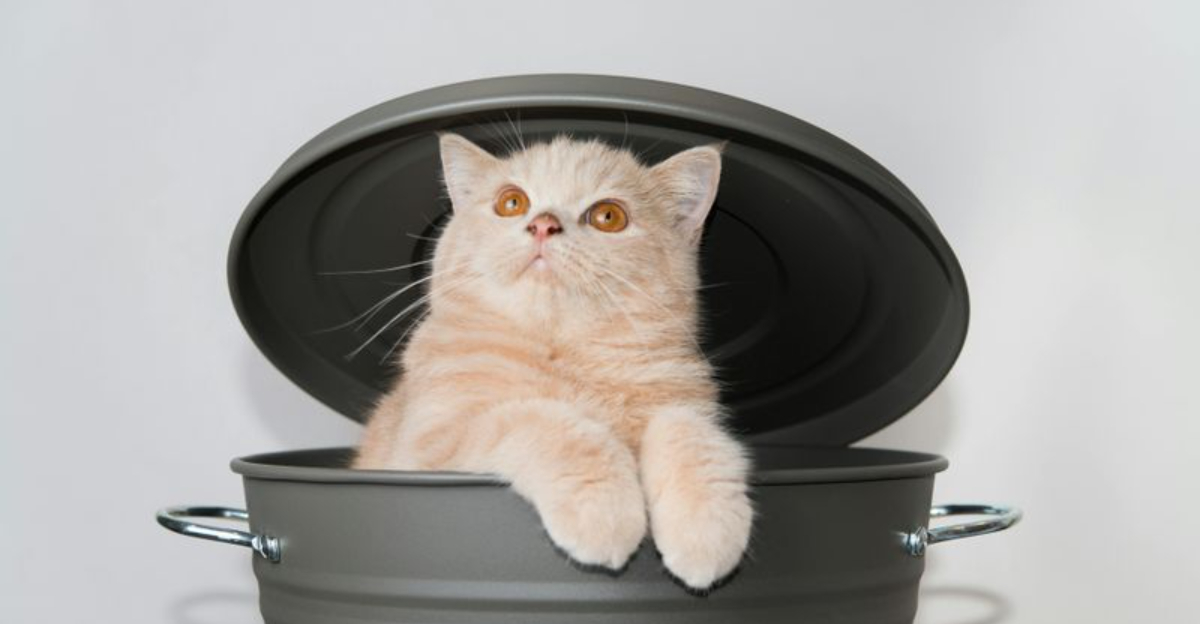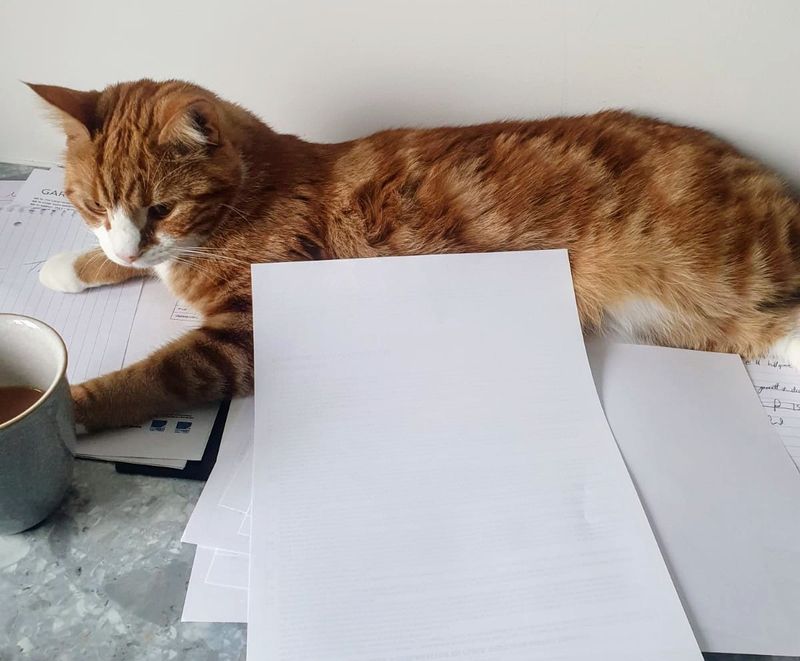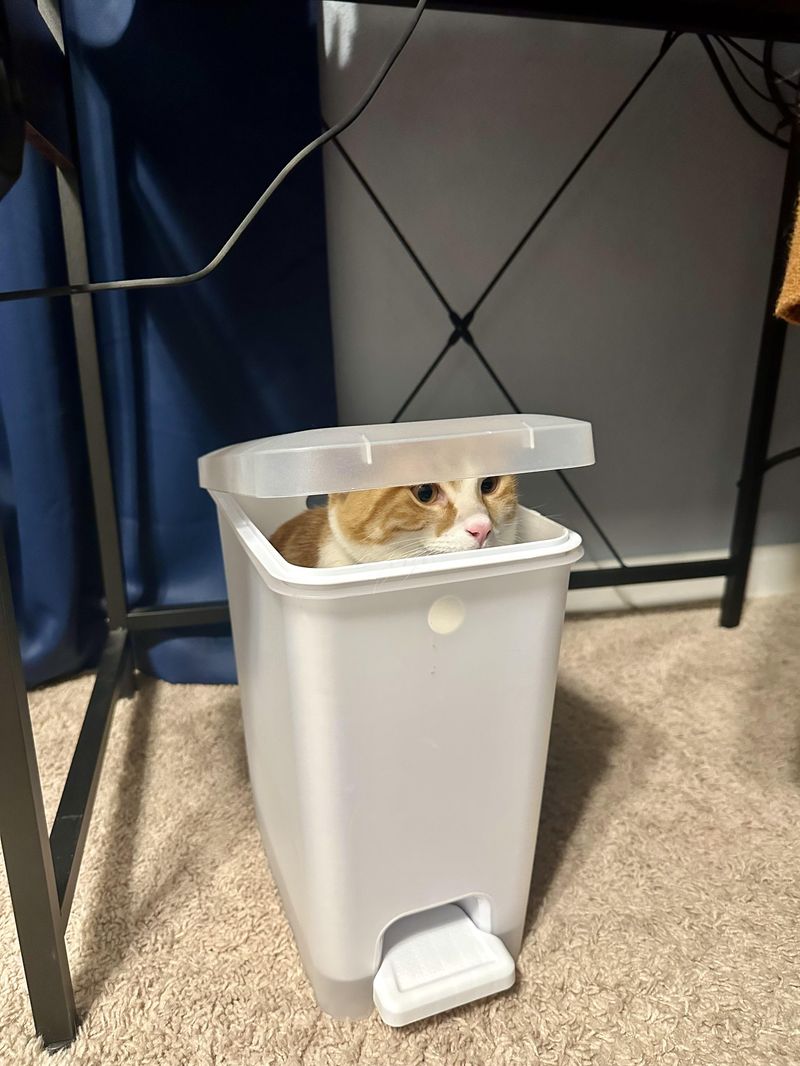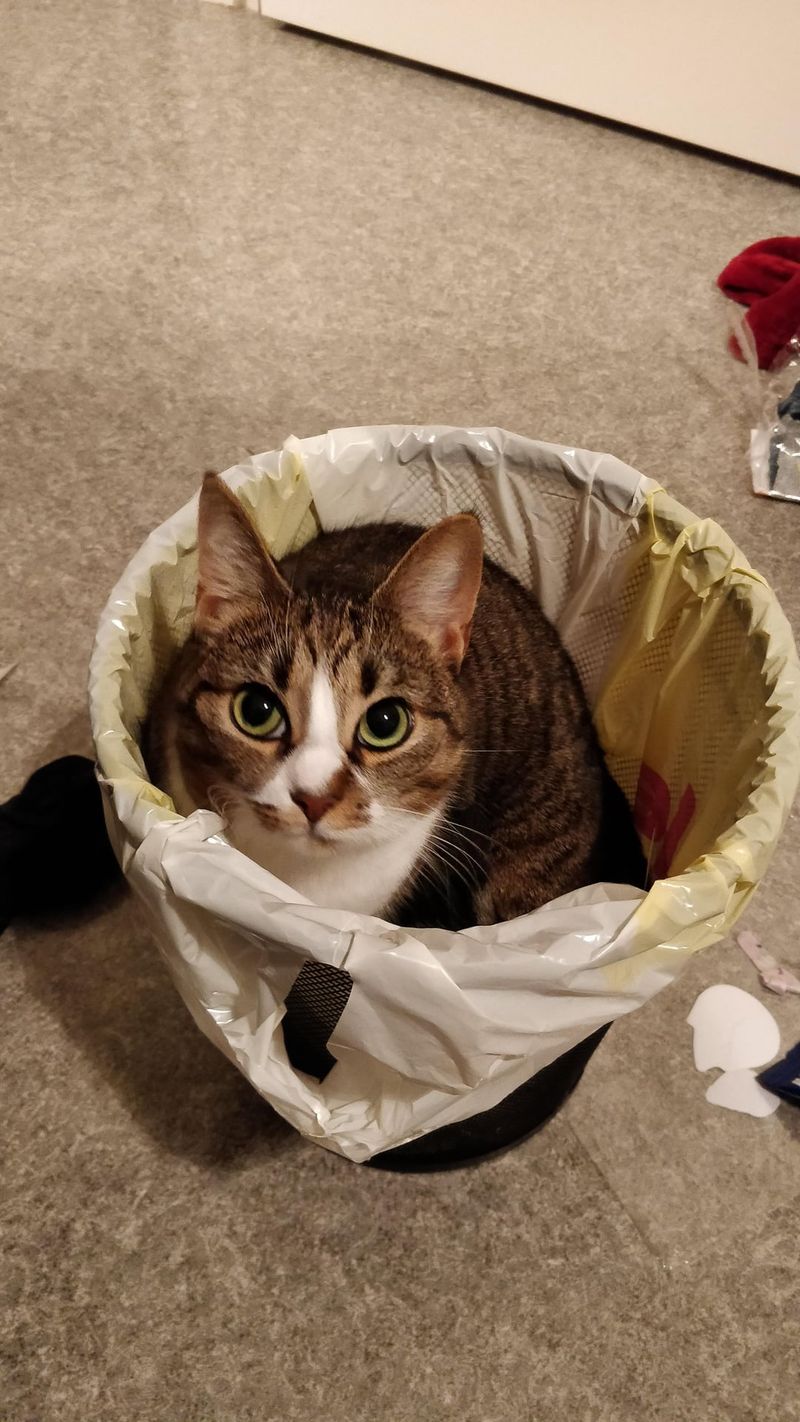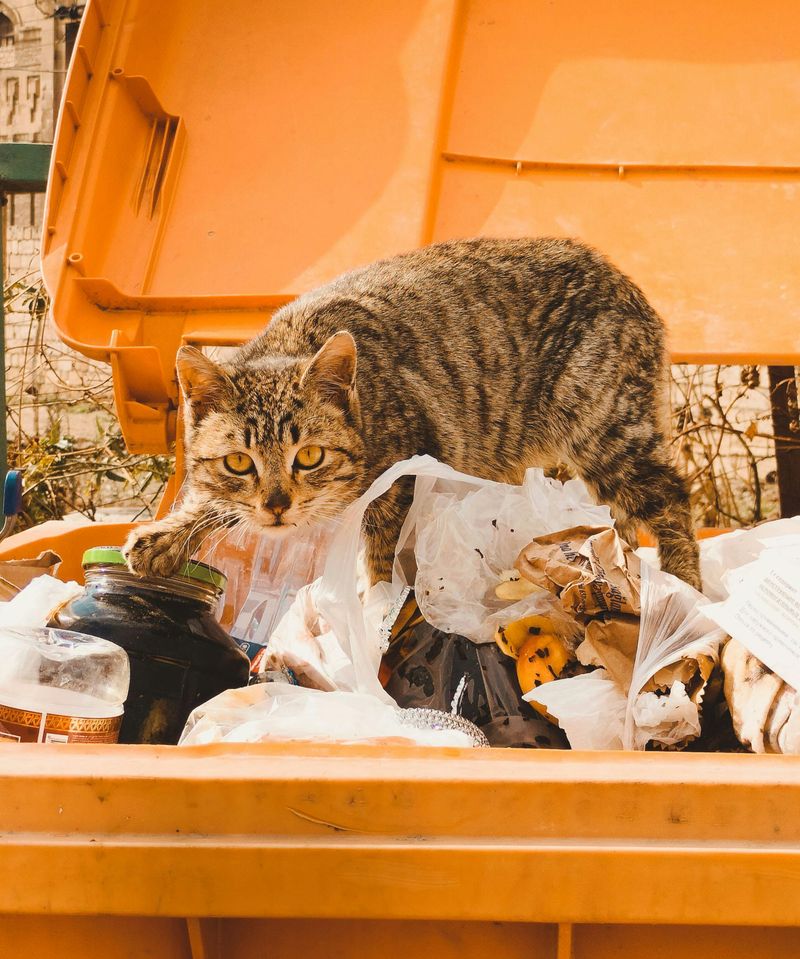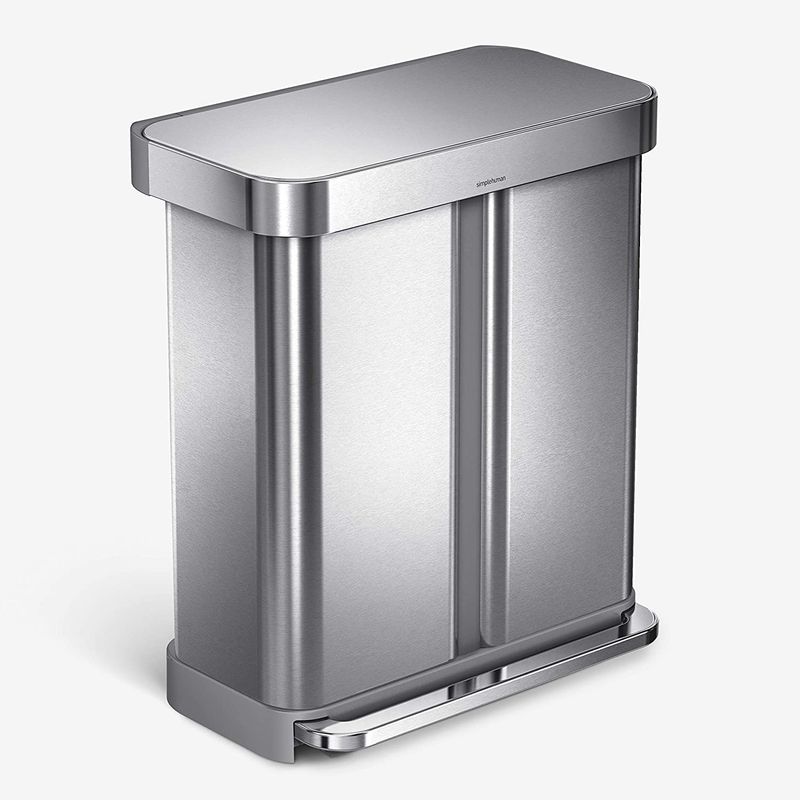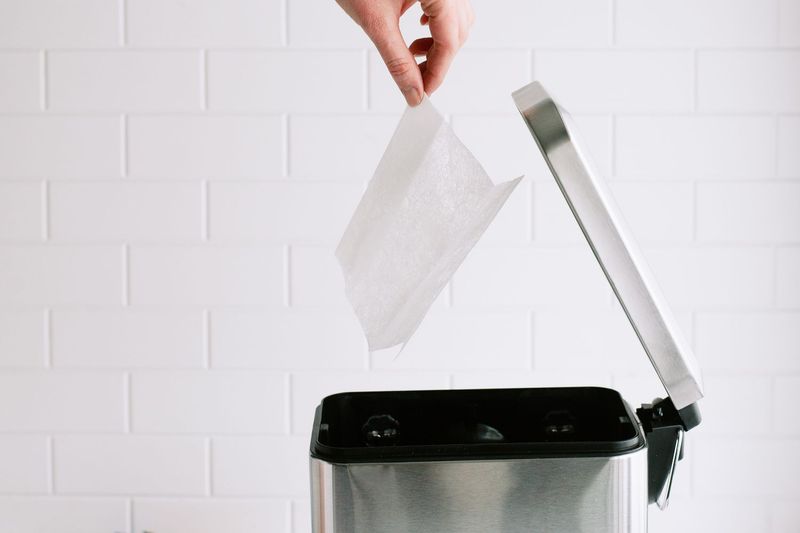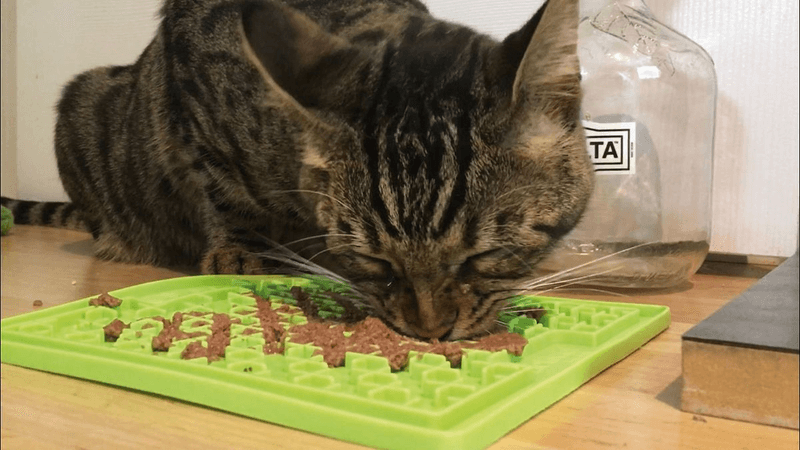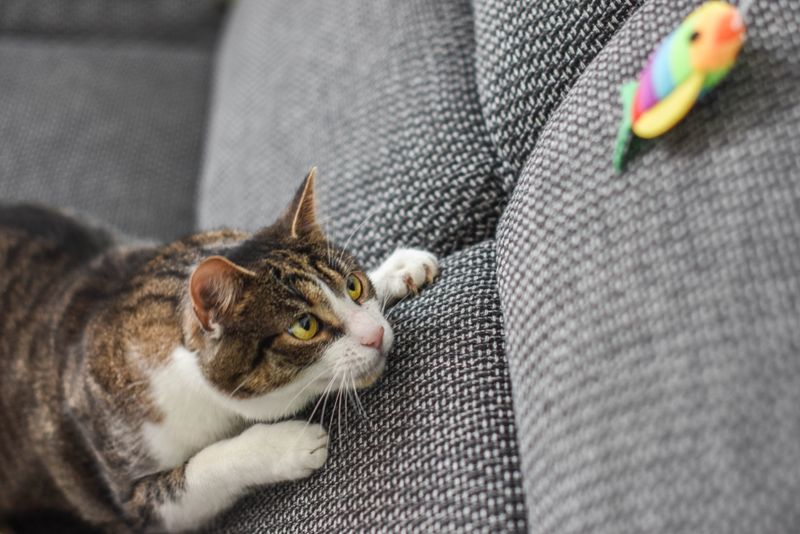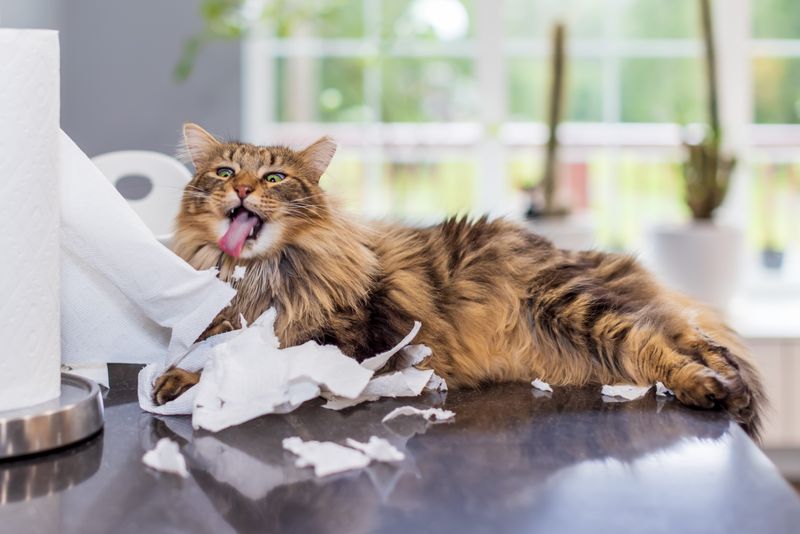📖 Table of Content:
- 1. They Smell Something Tasty
- 2. They’re Bored Out of Their Whiskers
- 3. It’s a Treasure Hunt
- 4. They’re Hungry or Underfed
- 5. It’s a Habit Now
- 1. Secure the Bin Like Fort Knox
- 2. Make the Trash Stinky (In a Bad Way)
- 3. Keep Them Full & Happy
- 4. Provide Boredom Busters
- 5. Take the Trash Out More Often
If you’ve ever walked into your kitchen and found shredded tissues, empty wrappers, and a very guilty-looking feline sitting proudly next to the carnage, congratulations—you have a trash bandit on your hands. Cats, for all their elegance and poise, can be surprisingly obsessed with what lies inside a garbage can. That seemingly gross and forbidden zone is, to them, a wonderland of smells, textures, and hidden treasures.
While dogs are more commonly blamed for trash-related mischief, cats are just as capable of launching a stealthy late-night raid. And unlike dogs, who may leave behind clear signs of destruction, cats can be sneakier—picking through bits here and there like tiny burglars in fur coats. Their motivation ranges from primal instincts to sheer boredom, and once the habit is formed, it can be hard to break.
But don’t worry—we’re not here to shame your whiskered rascal. Instead, let’s decode why your cat has taken a shine to dumpster diving and explore effective (and a little humorous) ways to stop the nightly trash raids. From understanding their wild little minds to taking simple home precautions, you’ll be equipped to turn the trash can from a playground into a no-cat zone.
1. They Smell Something Tasty
Tempting aromas are often the number-one culprit behind your cat’s garbage escapades. A cat’s nose is powerful—over 200 million scent receptors strong—and it can detect the scent of leftover tuna from a mile away (okay, maybe not quite, but it feels that way). No matter how gross we find stale chicken bones or moldy cheese, your cat might perceive them as delicacies. With their natural hunting instincts still intact, the whiff of meat or dairy is enough to send them into full scavenger mode. It’s not personal—they’re simply hardwired to follow their noses. Even sealed bags may not deter them if the scent is strong enough. When the bin smells like a buffet, it becomes their mission to investigate.
2. They’re Bored Out of Their Whiskers
Boredom in cats often leads to mischief, and the trash can is just one more outlet for their unspent energy. Imagine being stuck at home all day with nothing to chase, bat, or climb—your cat is constantly looking for mental stimulation. The crinkle of a trash bag, the mystery of the contents, and the reward of finding something “interesting” can turn your garbage into an adventure zone. Without regular play or new stimuli, your cat will find ways to entertain itself—even if that means making a mess. Bored cats are creative, and not always in the ways you’d like. This kind of behavior is more common in indoor cats with fewer environmental changes. If the trash is the only “fun” around, it becomes a regular event.
3. It’s a Treasure Hunt
Rummaging through the trash might not seem glamorous, but to a cat, it’s practically a quest. Your trash contains paper, wrappers, foil, food scraps, and more—all of which are delightfully interactive from a feline perspective. Crumpled napkins become toys, plastic wrap makes an intriguing noise, and a box from last night’s takeout smells like an exotic location. This is less about food and more about novelty—every trash dive is a chance to discover something new. Unlike their human companions, cats don’t need a reason beyond curiosity. If it rustles, crinkles, or slides, it’s worth investigating. When the trash can becomes a source of daily intrigue, it’s hard to resist.
4. They’re Hungry or Underfed
Occasionally, the answer is a simple one: your cat might still be hungry. While most pet cats are fed regularly, some may not be getting the right portion sizes or nutrient-dense foods they need. Hunger drives scavenging in all animals, and a less-than-satisfying meal might lead your cat to seek out a second course—in the trash. If they’ve ever scored food there before, they may associate the bin with backup snacks. Food insecurity, even mild or occasional, creates resource-guarding behavior over time. This isn’t about gluttony—it’s survival instinct whispering, “Find more.” A consistently hungry cat is more likely to become a garbage raider.
5. It’s a Habit Now
Over time, what began as curiosity can turn into a full-blown habit. If your cat has successfully pulled something “rewarding” from the trash even once, the behavior can reinforce itself. Cats learn quickly when an action leads to a reward, and dumpster diving can become part of their routine if left unchecked. Habits are difficult to break, especially when they’re fun and occasionally satisfying. Some cats may even start checking the trash on a schedule, as if it’s their job. Without interruption, this habit becomes normalized behavior in their eyes. Before you know it, you’ve got a nightly trash patrol on your hands.
1. Secure the Bin Like Fort Knox
Upgrading your trash bin can be the first line of defense. Choose models with tight lids, pedal-operated closures, or locking mechanisms to keep curious paws at bay. Lightweight or lidless bins are practically invitations for mischief, so it’s worth investing in something sturdy. Even placing a heavy object on the lid can deter sneaky intrusions. Many pet stores even sell trash cans designed specifically to be pet-proof. Consider where you place the bin as well—inside a cabinet or pantry can add another layer of protection. When access becomes difficult, your cat will gradually lose interest.
2. Make the Trash Stinky (In a Bad Way)
Cats are famously picky about smells, and you can use that to your advantage. Citrus, vinegar, eucalyptus, or store-bought pet-safe deterrents can make your trash area unappealing. Apply these scents around the lid or on nearby surfaces (but not directly on anything they might lick). It’s a simple solution that discourages without scolding. Most cats will back off immediately if their sensitive noses pick up something they don’t like. Be sure whatever you use is non-toxic and safe for animals. You may need to reapply every few days for consistency. With enough unpleasant encounters, your cat will get the message.
3. Keep Them Full & Happy
A well-fed cat is a less curious cat—especially when it comes to seeking out rogue snacks. Make sure their diet includes the right balance of protein, fats, and fiber to leave them feeling satisfied. Cats that are regularly hungry will continue to look for supplemental food sources. You can also try food puzzles or interactive feeders to mimic natural foraging behavior and keep their brains busy. Feeding on a schedule helps regulate their expectations, too. Monitor portion sizes to ensure they’re not just gobbling and staying hungry. When their needs are met at mealtime, the trash loses its appeal.
4. Provide Boredom Busters
Stimulation is the secret weapon against naughty behavior. Rotate toys regularly to keep them exciting, offer window perches for bird-watching, and engage in daily play with wand toys or laser pointers. Scratching posts and cat trees offer physical outlets, while puzzle toys challenge their minds. Consider DIY toys, like a crumpled paper ball or a cardboard box fort. Cats that are mentally and physically active are less likely to act out of boredom. Give them enough variety, and they’ll forget the trash can even exists. A tired cat is a happy (and less destructive) cat.
5. Take the Trash Out More Often
It sounds simple, but it works: don’t give them the opportunity. If you regularly dispose of food waste and empty your trash before it becomes “aromatic,” your cat will have far less reason to investigate. Smaller bags or bins that get changed daily can be a game changer. Make it a habit to tie up food scraps immediately and store them out of reach until disposal. Without the scent cue, their curiosity has no fuel. This also helps keep your home cleaner and pest-free. If there’s no payoff, your cat will stop showing up for the party.
